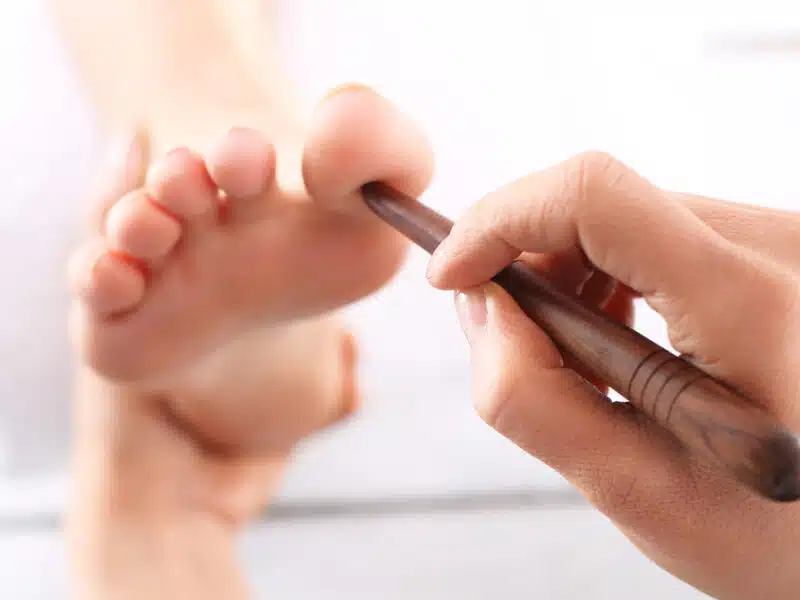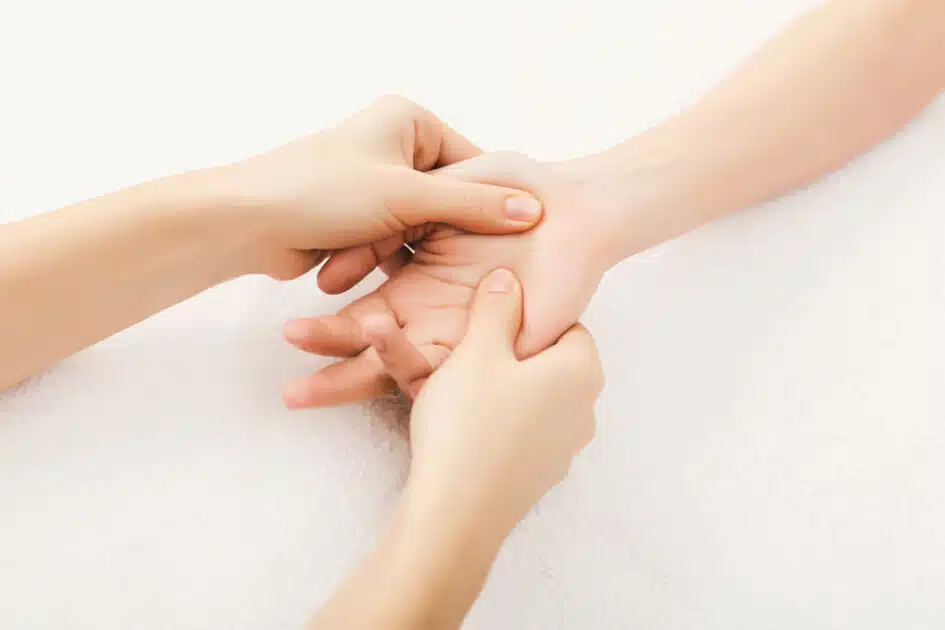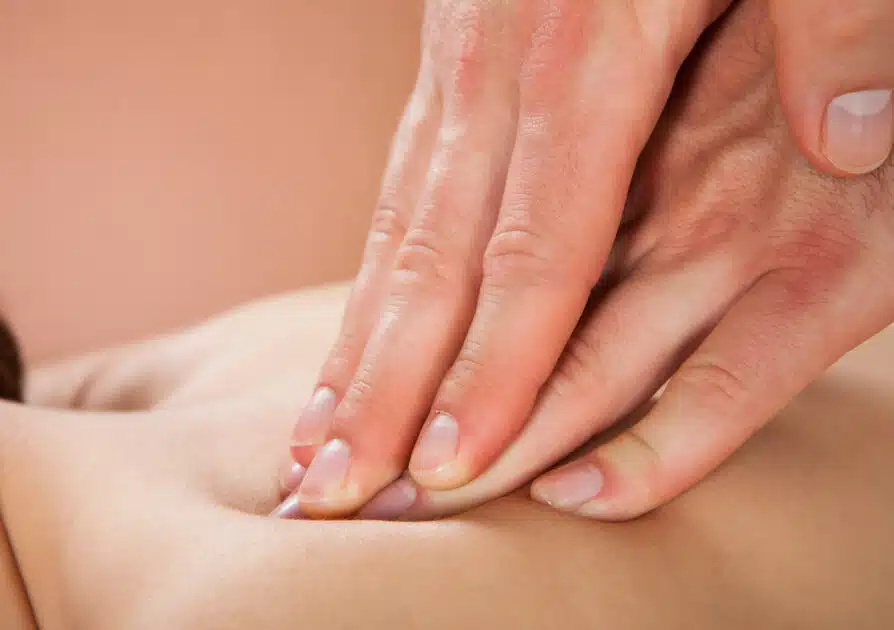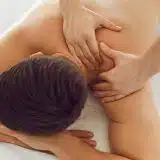Acupressure Massage: Explore the Benefits and Balance Your Energy Pathways

Unlocking the Healing Power of Your Body Through Acupressure Massage
What is Massage 22nd Jul, 2023
Acupressure massage, deeply rooted in traditional Chinese medicine, is a powerful therapeutic technique that revolves around the application of manual pressure on specific points in our bodies. These points, known as acupoints, act as critical junctions in a network of energy channels called meridians. They are believed to be paths for life energy, or chi, to flow through and nourish our bodies.
The core premise of acupressure massage revolves around the concept of harmonious energy circulation. When this energy flow is disrupted or blocked, it can manifest in various health issues or imbalances. Acupressure massage aims to restore this harmony, facilitating chi to flow freely and stimulating the body’s self-healing capabilities.

The potential health benefits of acupressure massage are diverse. This natural, non-invasive technique has been associated with relief from chronic pain, stress reduction, improved sleep, and even boosting immunity. It’s a powerful tool to alleviate discomfort, enhance well-being, and establish a holistic balance between mind, body, and spirit.
DIY Acupressure Massage Therapy
Acupressure, a significant component of preventative healthcare, helps us build immunity against illnesses while correcting any energy imbalances. Over the last six months, we’ve explored a variety of acupressure locations, each meant to boost your health quotient.
Acupressure massage treatment proponents believe that our bodies are imbued with a dynamic life energy known as chi or qi. This energy penetrates our entire existence, traveling through the meridians, the channels beneath our skin, and the organs themselves. Our goal is to assist you in experiencing and maintaining the healthy management of this chi via the art of acupressure.
To emphasize the therapeutic potential of acupressure massage treatment, we’ll go through some of the conditions it may help with:

1. Acupressure for Headaches, Migraines, Neck, and Shoulder Pain: Acupressure can be a non-invasive alternative to alleviate chronic headaches and migraines. It also offers relief for neck and shoulder tension, which are often the root causes of these headaches.
2. Acupressure for Enhanced Focus and Concentration: The right application of pressure on key points can stimulate cognitive functions, helping to improve focus and concentration, thereby aiding productivity and mental clarity.
3. Acupressure for Numbness in Arms, Hands, and Fingertips: Numbness can result from inadequate blood circulation or nerve compression. Acupressure can aid in restoring normal sensation by boosting circulation and energy flow.
4. Acupressure for Anxiety, Stress, and Depression: Acupressure can assist in relieving emotional and mental pressure. It works to balance the body’s energy, thereby easing stress, reducing anxiety, and even alleviating symptoms of depression.
5. Acupressure to Strengthen a Weakened Immune System: By stimulating points that correspond to different systems in the body, acupressure can enhance the immune system’s functionality, helping the body to better resist illnesses.
This guide serves to spotlight the versatility and potential of acupressure as a means of DIY healing. Learn to harness this ancient therapeutic technique to improve your health and overall well-being.
Learning to Massage Your Acupressure Points
Isn’t it natural to want to comfort the afflicted region while you’re in pain? This natural, subconscious self-massage is an inbuilt coping mechanism that may be greatly enhanced by learning acupressure. This therapeutic technique can greatly improve relaxation and successfully treat chronic pain.
Acupressure is rooted in the traditions of Chinese medicine, a time-honored practice with over two millennia of success. This therapy activates the body’s natural healing mechanisms, providing pain relief and treating a variety of diseases. Acupressure, which is similar to acupuncture but without the tiny needles, focuses on activating the body at certain meridian points, or pressure points.
Discovering the Healing Power of Your Hands
- Understand Your Body’s Map
- Positioning
- The Pressure Application
- Hold and Release
- Breathing
- Consistency
As a sort of self-massage, acupressure has the potential to equip you with the skill to deal with daily tensions, pains, and maladies. It is a simple way to harness your body’s natural healing potential.
Acupressure Treatment for Specific Pain Areas
Acupressure is an all-natural remedy for pain or discomfort in numerous regions of the body. You can relieve pain and promote healing by finding the relevant acupressure points associated with the pain zones.
Here are some examples of particular areas where acupressure might help:
1. Shoulder Pain: The Jian Jing point, aka Gallbladder 21 (GB21), is a go-to for soothing shoulder tension. Found between the neck and shoulder, giving this spot a firm but gentle press can ease shoulder pain.
2. Lower Back Pain: Sea of Vitality (B23 & B47) points, located on the lower back, can help alleviate lower back pain. Consistent acupressure on these points may help ease muscle tension and enhance mobility.
3. Sinus Pain: Facial beauty acupressure points like Yingxiang (LI20) beside the nostrils and Bitong point on the highest spot of the nasolabial fold can ease sinus pain and congestion.
4. Headache/Migraine: The Gates of Consciousness (GB20) points, found at the base of the skull in the hollow areas between the neck muscles, can ease headaches and migraines.
5. Digestive Issues: The Three Mile Point (St36), located four finger widths below the kneecap towards the outer side of the leg, can help with digestive disorders, including constipation and diarrhea.
If you are new to acupressure, it may be helpful to get advice from a skilled practitioner or reputable resources to ensure you are using the right techniques and points. And, as usual, consistency is essential; acupressure is most effective when administered on a regular basis, typically many times each day, for lengthy periods of time.

Acupressure Therapy and Its Applications
Acupressure treatment is a holistic health technique based on applying pressure to different spots on the body, having roots in Traditional Chinese Medicine (TCM). Practitioners hope to release blocked energy, or Qi, within the body’s meridians (energy channels) by stimulating these sites, known as acupoints.
Acupressure treatment can provide several health advantages, addressing a wide range of physical and mental disorders. Let’s look at some of its applications:
Pain Relief: By targeting specific acupoints associated with pain zones in the body, acupressure can reduce discomfort and increase pain tolerance. This includes pain from headaches, menstrual cramps, muscle tension, joint pain, and more.
Stress Management: Acupressure can stimulate points that help to reduce stress and anxiety. By promoting relaxation and releasing tension, acupressure aids in managing stress and enhancing overall emotional health.
Digestive Health: Some acupoints are linked to the digestive system and can help alleviate conditions such as constipation, bloating, and other digestive discomforts when massaged regularly.
Insomnia and Sleep Disorders: Acupressure points like the Spirit Gate (HT7), located on the inner wrist crease, can help with insomnia and other sleep disorders, promoting more restful sleep.
Boosting Immunity: Acupressure can enhance the immune system’s function, making it more effective in combating diseases. It also promotes better circulation of blood and lymphatic fluids, which are essential for detoxification and disease prevention.
Respiratory Health: Acupressure can relieve respiratory issues such as asthma, sinusitis, or common colds by stimulating the relevant acupoints.
While there are several benefits to acupressure therapy, it is crucial to realize that its efficacy can be altered by lifestyle circumstances. A balanced diet, regular exercise, proper rest, and stress management are all important factors to consider when using acupressure. Furthermore, while acupressure can help with symptoms of a variety of diseases, it should not be used in place of expert medical advice and treatment.
Finally, acupressure works best in a relaxed, peaceful setting. To improve the overall effectiveness of your acupressure sessions, prioritize creating a quiet environment, either at home or in a therapeutic facility. A peaceful setting combined with the therapeutic power of acupressure can substantially contribute to your road to greater health and wellness.
Recommended:
Percussion Massage Therapy
Acupressure Therapy and Its Use
Acupressure is an ancient medical treatment that has been performed for thousands of years and uses acupuncture principles to promote well-being and relaxation. Unlike acupuncture, which uses needles, acupressure focuses on physical pressure delivered to particular places on the body known as acupoints.
Pain Relief
A key application of acupressure therapy is pain relief. By applying focused pressure to the appropriate acupoints, the therapy can help alleviate headaches, backaches, neck pain, and other forms of chronic pain. The technique releases endorphins, the body’s natural painkillers, reducing the sensation of discomfort and promoting a sense of well-being.
Stress Management
Acupressure can play a pivotal role in managing stress and anxiety. Certain acupoints, when stimulated, can help reduce tension, promote deep relaxation, and increase the feeling of tranquility, helping individuals manage their stress levels more effectively.
Digestive Aid
Digestive issues, such as nausea, bloating, constipation, and even irritable bowel syndrome, can be improved through acupressure. Specific acupoints correspond to the digestive system, and when these are stimulated, they can promote better digestive function and alleviate discomfort.
Holistic Health
Beyond addressing specific issues, acupressure supports holistic health. The practice aims to balance the body’s energy channels or meridians, improving overall health and strengthening the body’s resistance to diseases.
Sleep Aid
Insomnia and other sleep disorders can also be treated with acupressure. Certain points on the body, when massaged, can promote relaxation and facilitate a deeper, more restful sleep.
While acupressure may be a powerful therapeutic technique, it must be used in conjunction with a larger lifestyle commitment to health and well-being. Regular practice, in conjunction with a healthy diet, regular exercise, and decent sleeping habits, will enhance the advantages of acupressure. It’s also critical to establish a calm and comfortable environment for your acupressure sessions so that your body can completely participate in the healing process.
Acupressure Uses and Benefits
Acupressure is an integral part of traditional Chinese medicine, which emphasizes the balance and free flow of energy, or qi, in the body. This therapy applies physical pressure to certain points, or acupoints, on the body, which is believed to correspond with specific organs and bodily systems. The use of acupressure has been known to provide numerous health benefits that can complement traditional medicine.
The primary aim of acupressure is to restore balance in the body and help the energy flow unhindered. It can be used to treat many conditions, including headaches, menstrual cramps, nausea, stress, and anxiety. For instance, pressing certain points on the wrist can alleviate symptoms of nausea or motion sickness, and pressure on points in the foot can relieve headaches.
Acupressure’s benefits aren’t just limited to the physical. It can also support mental health by relieving stress and anxiety. This is thought to occur as the pressure points used in this therapy can induce relaxation, calm the mind, and enhance overall well-being.

While the exact mechanisms behind acupressure are still not fully understood, many believe that the pressure applied to these points may trigger the release of endorphins, the body’s natural painkillers. This would explain why acupressure can help relieve pain. Additionally, some suggest acupressure might affect the autonomic nervous system, which controls functions such as heart rate, digestion, and respiration, thus potentially contributing to a wide range of health benefits.
Also, acupressure offers a wealth of uses and benefits, making it a valuable addition to any wellness routine. Despite the mystery surrounding its precise workings, this ancient healing art has held its ground for centuries, delivering various health benefits to those who practice it. It is crucial, however, to remember that while acupressure can support overall wellness, it is not a replacement for traditional medical treatment for serious or chronic conditions.
Recommended:
Tension with Precision: Unlocking Knots and Trigger Point Relief with Tension-Alleviating Massage
The Bottom Line
Acupressure massage, deeply rooted in traditional Chinese medicine, is a time-tested healing technique. It revolves around the belief that the body can heal itself. By applying pressure to specific points, acupressure boosts energy flow (‘qi’), aiding the body’s healing and offering various health benefits.
Whether you need relief from headaches, muscle tension, or stress, acupressure is a gentle and holistic approach to consider. While it’s not a cure-all, it complements medical treatments well, empowering individuals in managing their health. Remember to consult a healthcare professional before starting any new health routine, as acupressure may not be suitable for everyone, especially those with certain health conditions.
FAQs
What is acupressure massage, and how does it work?
Acupressure massage is a traditional healing technique that involves applying gentle pressure to specific points on the body’s energy pathways. This stimulation aims to promote the flow of vital energy (Qi) and restore balance, relieving tension and supporting overall well-being.
What are the potential benefits of acupressure massage?
Acupressure massage offers various benefits, including stress reduction, pain relief, improved circulation, enhanced energy levels, and better sleep quality.
Is acupressure massage safe for everyone?
Acupressure massage is generally safe, but it’s important to consult with a qualified practitioner or healthcare professional, especially if you have any health concerns or conditions.
How is acupressure massage different from acupuncture?
Acupressure massage and acupuncture share similar principles of balancing energy, but the application method differs. Acupressure uses finger pressure on acupoints, while acupuncture involves thin needle insertion.
How long does an acupressure massage session typically last, and how many sessions are recommended?
Acupressure massage sessions usually last 30 to 60 minutes. The number of recommended sessions varies based on individual needs and health goals, ranging from a few sessions for relief to ongoing treatments for maintenance.
















